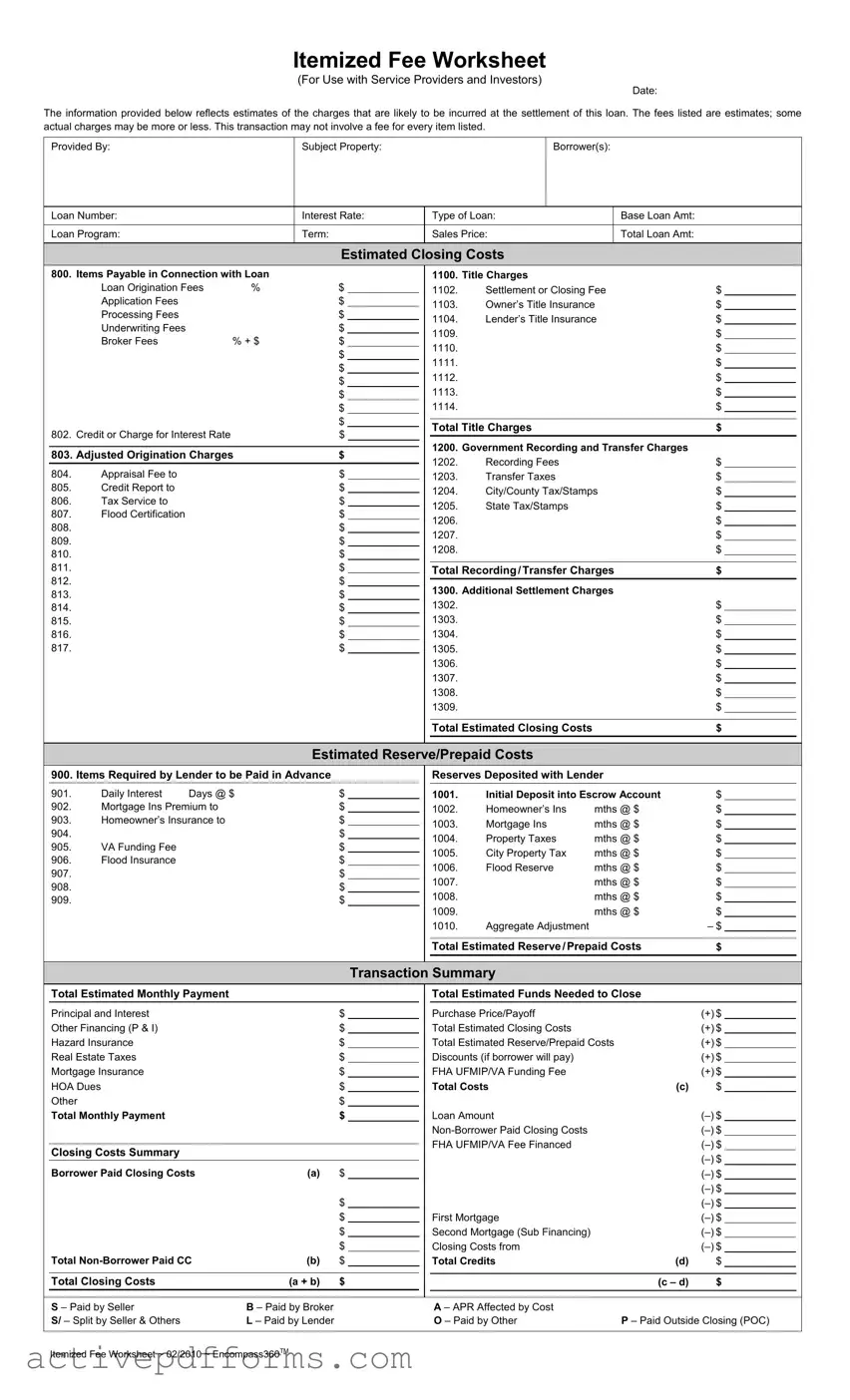When navigating the complexities of acquiring a mortgage, borrowers and their service providers come across a crucial document known as the Itemized Fee Worksheet. This detailed document, essential for transparency in mortgage transactions, outlines the estimated costs that borrowers are likely to encounter at the close of the loan. It breaks down numerous charges, from loan origination fees and title charges to government recording and transfer charges, as well as additional settlement charges and reserve/prepaid costs. The form serves a vital role in providing an early estimate of what the borrower can expect in terms of fees, thereby aiding in financial planning and decision-making. Not only does it list each fee, but it also categorizes them into easily understandable sections, offering insight into the total estimated closing costs, monthly payments, and the total funds needed to close the transaction. As it includes potential variations like discounts and non-borrower paid closing costs, the worksheet ensures a comprehensive overview, although it's important to note that the final costs may vary. Providing such estimates empowers borrowers and investors with greater control over their financial commitments and expectations throughout the mortgage process.
